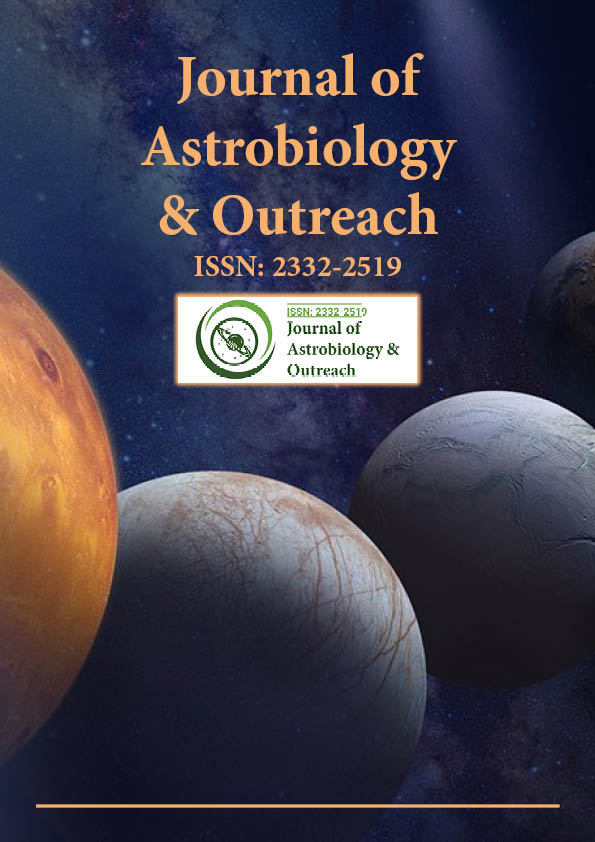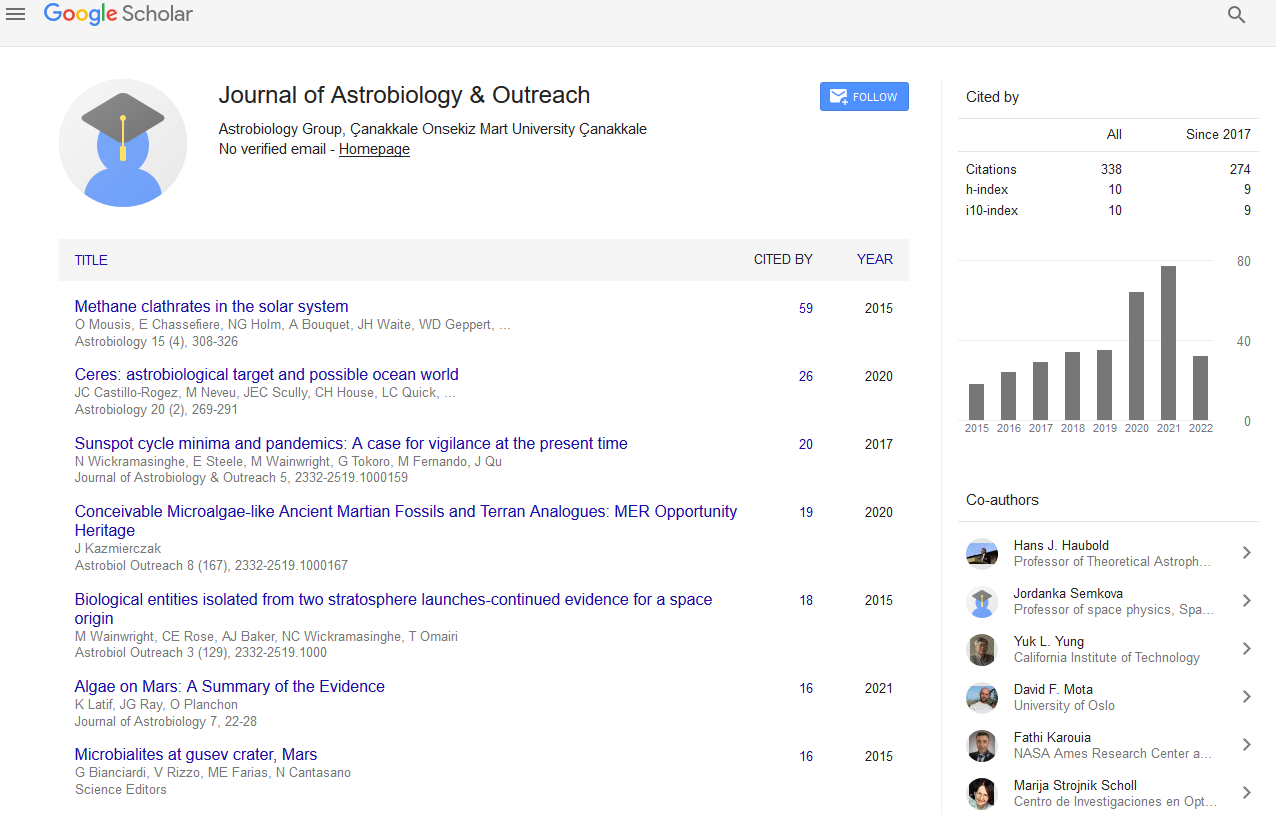Indexed In
- Open J Gate
- Academic Keys
- JournalTOCs
- RefSeek
- Hamdard University
- EBSCO A-Z
- OCLC- WorldCat
- Google Scholar
Useful Links
Share This Page
Journal Flyer

Open Access Journals
- Agri and Aquaculture
- Biochemistry
- Bioinformatics & Systems Biology
- Business & Management
- Chemistry
- Clinical Sciences
- Engineering
- Food & Nutrition
- General Science
- Genetics & Molecular Biology
- Immunology & Microbiology
- Medical Sciences
- Neuroscience & Psychology
- Nursing & Health Care
- Pharmaceutical Sciences
Opinion Article - (2025) Volume 13, Issue 1
Challenging Cosmological Assumptions through Abnormal Light Observations
Isaac Nebula*Received: 19-Feb-2025, Manuscript No. JAO-25-28771; Editor assigned: 21-Feb-2025, Pre QC No. JAO-25-28771 (PQ); Reviewed: 07-Mar-2025, QC No. JAO-25-28771; Revised: 14-Mar-2025, Manuscript No. JAO-25-28771 (R); Published: 21-Mar-2025, DOI: 10.35248/2332-2519.25.13.372
Description
In the field of astrophysics, much of what we understand about the cosmos relies heavily on interpreting the behavior of light across immense distances. From redshift measurements to gravitational lensing, the propagation of light forms the foundation upon which theories of cosmic structure, expansion and fundamental physics are constructed. However, increasing attention is being paid to anomalies in light propagation—cases where light does not appear to behave as predicted by current models. These include unexplained dimming, wavelength shifts, or deviations in trajectories that are not fully accounted for by general relativity or known interstellar medium interactions.
These anomalies, though often subtle, raise critical questions about the limits of our theoretical frameworks and the degree to which empirical data can decisively adjudicate between competing astrophysical models.
The issue relates to the philosophical concept of under-determination of theory by evidence—the idea that empirical data alone may be insufficient to conclusively choose between two or more scientifically valid theories. In the context of astrophysics, this notion takes on unique weight due to the observational rather than experimental nature of the discipline. Unlike laboratory sciences, astrophysics cannot directly manipulate celestial objects or reproduce conditions at will. Instead, astrophysicists depend on indirect measurements and inferences drawn from the light that reaches us, making the field particularly vulnerable to interpretative ambiguities and the possibility of multiple plausible explanations.
Consider, for example, the phenomenon of cosmic acceleration inferred from Type Ia supernova observations. The dimming of these standard candles was interpreted as evidence for an accelerating universe, which gave rise to the hypothesis of dark energy. However, some researchers have proposed that variations in light propagation due to unknown intergalactic dust properties, alternative metrics of spacetime, or quantum-scale gravitational effects might also explain the data. While these alternative explanations are less accepted, their mere plausibility demonstrates the under-determination problem: multiple theories can account for the same observational signature, each with differing ontological commitments and broader implications.
Abnormalities in gravitational lensing observations similarly invite reconsideration of foundational theories. Instances of lensing that cannot be explained by visible or dark matter distributions challenge the completeness of our models. Is the anomaly due to unseen baryonic matter, modified gravity theories, or an artifact of light interacting with yet-unidentified cosmic phenomena? Without experimental controls, we are left with interpretative leeway and it becomes difficult to rule out competing hypotheses definitively. This issue is further compounded by the fact that model parameters are often adjusted post hoc to fit the data, which, while practical, can obscure whether the underlying theory genuinely predicts or merely accommodates the observations.
This situation is not a call to abandon theoretical progress, but rather an appeal for epistemic humility and methodological plurality in astrophysics. Abnormal light propagation should not merely be dismissed as observational error or noise; instead, it must be treated as an opportunity to rigorously examine the assumptions embedded in our models. Acknowledging under-determination encourages a scientific culture that remains open to revising even the most deeply held theories when confronted with persistent anomalies.
In conclusion, the issue of abnormal light propagation challenges the astrophysics community to re-examine the interplay between data and theory. It invites a more refined understanding of how knowledge is constructed in observational sciences and how assumptions about light behavior shape our entire view of the universe. The path forward lies not in dismissing under-determination as a philosophical abstraction, but in recognizing its practical relevance to scientific inquiry and embracing it as an important factor for stronger, more creative and reflective theorizing. Only through this openness can astrophysics continue to advance in both depth and integrity, even amid the vast uncertainties of the cosmos.
Citation: Nebula I (2025). Challenging Cosmological Assumptions through Abnormal Light Observations. J Astrobiol Outreach. 13:372.
Copyright: © 2025 Nebula I. This is an open-access article distributed under the terms of the Creative Commons Attribution License, which permits unrestricted use, distribution, and reproduction in any medium, provided the original author and source are credited.

